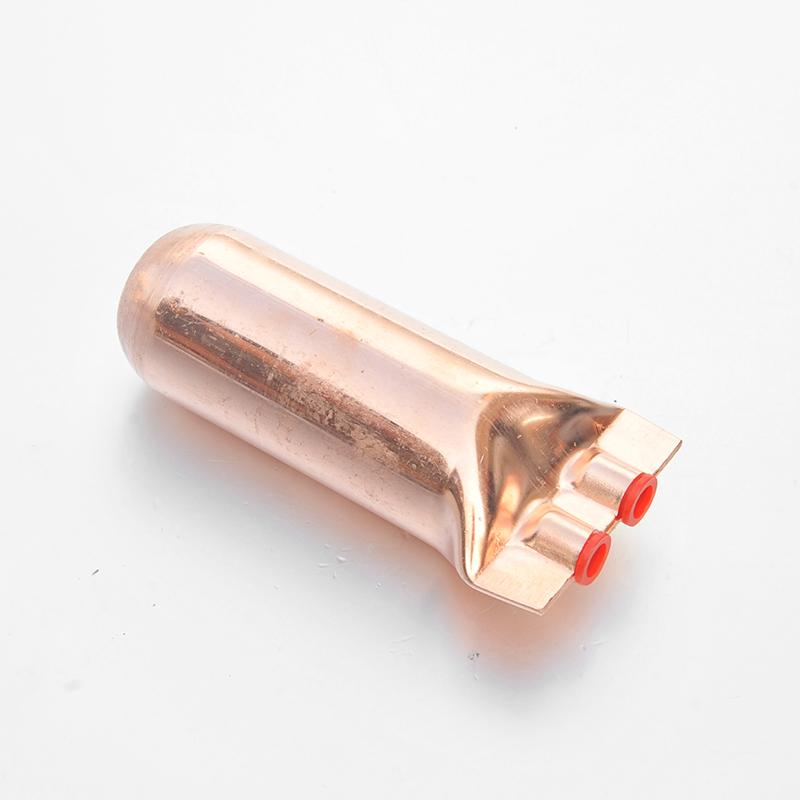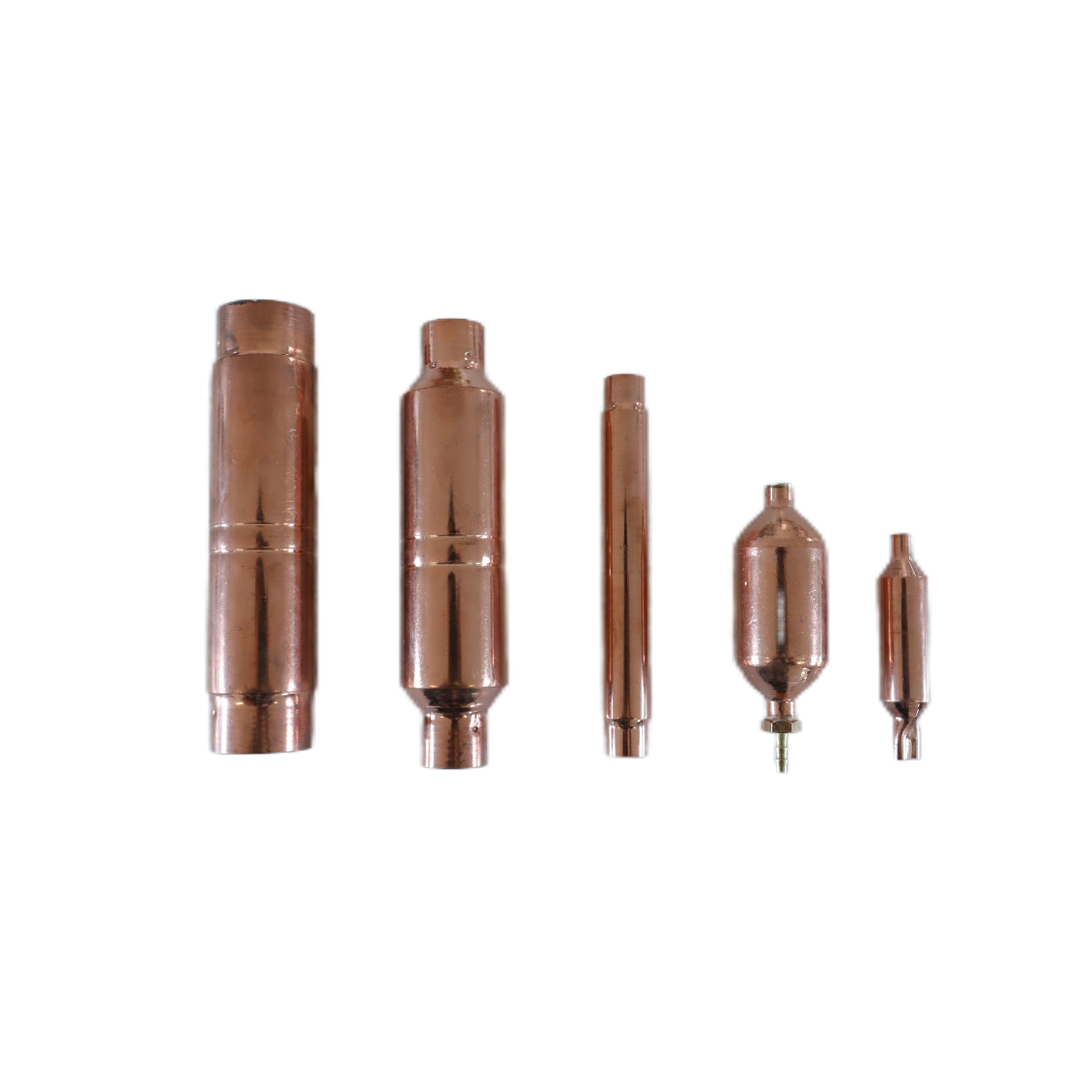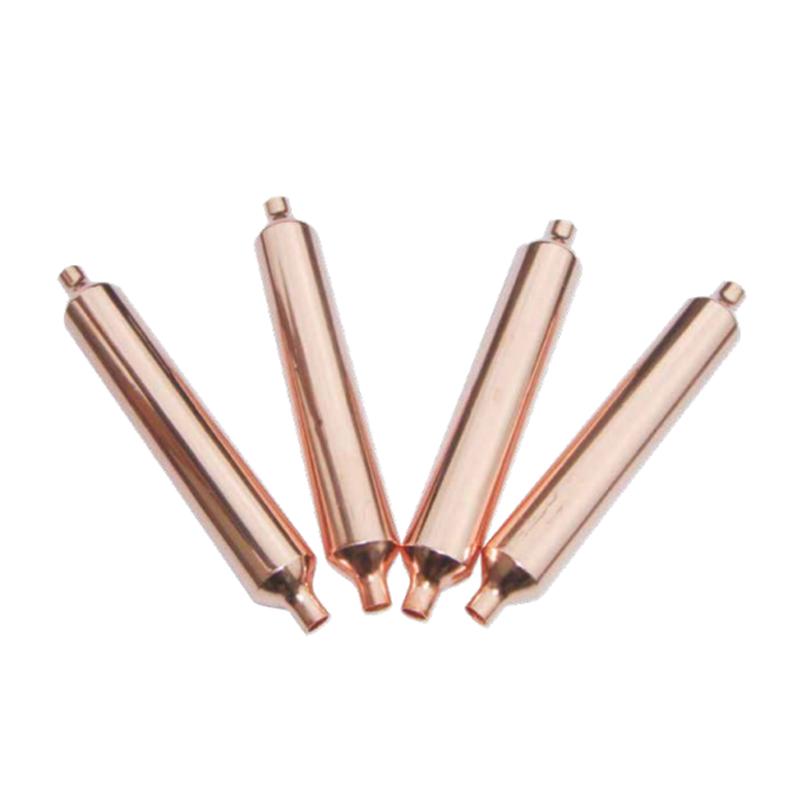Author:
-
Position:
General Manager of Foreign Trade Department, Taojun Refrigeration -
Professional Experience:
Engaged in international trade within the refrigeration industry since 2004.
Expert in brand strategy and omni-channel marketing, having led three multi-million yuan projects that boosted brand exposure by over 200%.
-
Core Competencies:
Proficient in data analysis and user growth strategies.
Skilled in SEO/SEM and social media management tools.
Experienced in cross-departmental collaboration and team leadership.
-
Philosophy:
"Data-driven decisions, creativity-powered branding." Committed to achieving business value and user experience excellence through refined operations. -
Vision:
Eager to collaborate with partners to explore emerging market opportunities and set industry benchmark cases.
Contact Us to Find More Products
Discover How Copper Accumulators Enhance HVAC Performance

Copper Accumulators play a crucial role in enhancing HVAC efficiency. They stabilize refrigerant flow, which minimizes maintenance issues. As a result, these components lead to significant cost savings and increased comfort in both residential and commercial settings. Furthermore, the integration of afilter drier for HVAC parts ensures optimal system performance.
Key Takeaways
- Copper accumulators improve HVAC efficiency by stabilizing refrigerant flow, leading to cost savings and increased comfort.
- Their high thermal conductivity enhances heat transfer, resulting in faster cooling and more consistent temperatures.
- Durable construction protects against rust and corrosion, extending the lifespan of HVAC equipment and reducing maintenance needs.
Benefits of Copper Accumulators

Improved Heat Transfer
Copper accumulators significantly enhance heat transfer in HVAC systems. Their high thermal conductivity allows them to absorb heat from refrigerants quickly. This efficiency leads to faster cooling and more consistent temperatures. Compared to materials like aluminum and steel, copper excels in heat transfer capabilities.
- Key Advantages of Copper in Heat Transfer:
- Copper has a higher thermal conductivity than aluminum and steel.
- It absorbs heat rapidly from refrigerants and transfers it to the environment.
- This efficiency results in improved air conditioner performance.
By utilizing copper accumulators, HVAC systems can achieve optimal cooling performance, ensuring a comfortable environment for users.
Enhanced Durability
Durability is another critical benefit of copper accumulators. Constructed from high-purity copper, these components resist rust and withstand high pressure. The argon arc welding process used in their sealing ensures a leak-proof design. This robust construction protects against corrosion caused by moisture and acidic substances, which can damage compressors and other vital components.
- Durability Features:
- Rust-proof and high-pressure resistant materials.
- Leak-proof design due to advanced welding techniques.
- Protection against corrosion extends the lifespan of HVAC equipment.
With enhanced durability, copper accumulators contribute to the reliability of HVAC systems, reducing the frequency of repairs and replacements.
Increased Energy Efficiency
Copper accumulators also play a vital role in increasing energy efficiency. By minimizing system resistance, they promote better refrigerant circulation. This improvement leads to lower energy consumption, resulting in cost savings over time. The efficient operation of HVAC systems not only benefits the environment but also reduces utility bills for consumers.
- Energy Efficiency Benefits:
- Improved refrigerant circulation reduces energy consumption.
- Lower energy usage translates to cost savings.
- Enhanced efficiency contributes to environmental sustainability.
Incorporating a filter drier for HVAC partsalongside copper accumulators further optimizes system performance. The Filter Drier absorbs moisture and filters impurities, ensuring that the refrigerant remains clean and effective.
How Copper Accumulators Reduce Maintenance Issues
Copper accumulators play a vital role in reducing maintenance issues within HVAC systems. Their design and functionality contribute to minimizing refrigerant loss, preventing system overload, and extending the lifespan of equipment.
Minimizing Refrigerant Loss
Copper accumulators effectively minimize refrigerant loss through several mechanisms. Their internal construction allows only vapor-state refrigerant to return to the compressor while liquid refrigerant and oil accumulate at the bottom. This design ensures that the system operates efficiently without unnecessary refrigerant loss.
| Mechanism Description | Function |
|---|---|
| Internal construction of the Accumulator | Allows only vapor-state refrigerant to return to the compressor while liquid refrigerant and oil are accumulated at the bottom. |
| Downward flow of refrigerant | Ensures that liquid refrigerant collects at the bottom, while vapor travels upwards. |
| U-Tube Inlet design | Pulls only vapor from the top of the shell, preventing liquid refrigerant from returning to the compressor. |
| Small oil return orifice | Ensures proper lubrication without causing liquid damage to the compressor. |
By effectively managing refrigerant flow, copper accumulators help maintain system efficiency and reduce the frequency of maintenance interventions.
Preventing System Overload
Preventing system overload is another critical function of copper accumulators. They protect compressors from potential failures, particularly in rotary compressors. The design of these accumulators prevents liquid refrigerant from entering the compression chamber directly, ensuring that any liquid is vaporized before reaching the compressor. This process minimizes the risk of malfunctions.
- Key benefits of copper accumulators in preventing system overload include:
- Essential protection against compressor failures.
- Debris protection through screens that block foreign objects from entering the compression chamber.
- Prevention of liquid refrigerant from directly entering the compression chamber.
These features contribute to a more reliable HVAC system, reducing the likelihood of costly repairs.
Extending Equipment Lifespan
Copper accumulators also extend the lifespan of HVAC equipment. They collect refrigerant mixtures, acting as a storage vessel that separates liquid from gas. This separation allows liquid refrigerant to fully vaporize before reaching the compressor, preventing liquid slugging. By ensuring only vaporized refrigerant enters the compressor, these accumulators protect against potential damage.
| Functionality | Impact on System Pressure and Refrigerant Flow |
|---|---|
| Equipped with pressure relief valve | Maintains stable pressure inside the accumulator, optimizing refrigerant flow. |
| Internal/external pressure regulation | Prevents over-pressurization, ensuring correct pressure for efficient operation. |
Additionally, copper's resistance to corrosion and microbial growth contributes to lower maintenance needs. This durability leads to reduced maintenance costs and longer service intervals, allowing for extended equipment use without interruption.
Real-World Applications of Copper Accumulators

Household Refrigeration
Copper accumulators play a vital role in household refrigeration systems. They help maintain stable refrigerant flow, ensuring that refrigerators operate efficiently. By preventing liquid refrigerant from entering the compressor, these accumulators enhance cooling performance. This leads to better food preservation and energy savings for homeowners.
Commercial Refrigeration
In commercial refrigeration, copper accumulators demonstrate significant performance improvements. They stabilize refrigerant flow, which is crucial for systems like supermarket freezers and beverage coolers. A recent study highlighted the following enhancements after retrofitting with copper accumulators:
| Improvement Type | Percentage/Value |
|---|---|
| Thermal Conductivity | +30% |
| Cooling Speed | 20% faster |
| Energy Consumption | -15% |
These improvements illustrate how copper accumulators contribute to more efficient and reliable commercial refrigeration systems.
Industrial Applications
Copper accumulators excel in industrial HVAC applications due to their superior thermal conductivity and corrosion resistance. These attributes are essential for high-demand environments. Industries often favor copper accumulators for their ability to withstand harsh conditions while maintaining efficiency. Although copper costs more than alternatives like steel and aluminum, its performance benefits justify the investment. This ensures that industrial systems operate reliably, meeting the rigorous demands of various processes.
The Role of Filter Drier for HVAC Parts
Filter driers serve as essential components in HVAC systems, working alongside copper accumulators to enhance overall performance. Their primary functions include moisture absorption, impurity filtration, and system protection.
Moisture Absorption
Moisture can enter HVAC systems through leaks or improper installation. If left unchecked, it reacts with refrigerants, forming corrosive acids that damage critical components. The filter drier effectively removes moisture from refrigerant lines, preventing corrosion and ice formation.
| Mechanism | Description |
|---|---|
| Desiccant Function | The desiccant in the filter-drier absorbs moisture when refrigerant is in a liquid state. |
| Importance in R-410A | In R-410A systems, filter driers are crucial due to the hygroscopic nature of synthetic oils. |
Impurity Filtration
Filter driers also capture impurities that can hinder system performance. They remove debris and metal particles, which can block refrigerant flow and reduce efficiency. By filtering out these contaminants, filter driers protect sensitive components like the expansion valve.
- Key contaminants filtered:
- Moisture
- Acids
- Particulates
System Protection
The filter drier plays a vital role in protecting HVAC systems from damage caused by contaminants. It prevents the buildup of acidic sludge and moisture, which can lead to compressor failure. By ensuring clean refrigerant flow, filter driers extend the lifespan of HVAC equipment, particularly compressors, which are often the most expensive components to replace.
- Prevents acid formation that can damage components.
- Protects against corrosion of metal parts.
- Ensures overall system efficiency and longevity.
Copper accumulators significantly enhance HVAC performance. They provide long-term benefits, including improved efficiency, energy savings, and extended equipment life. The table below summarizes these advantages:
| Benefit | Explanation |
|---|---|
| Improved Efficiency | The accumulator helps regulate temperatures and refrigerant flow, enhancing overall system performance. |
| Energy Savings | By recovering heat and optimizing refrigerant handling, the system reduces energy consumption. |
| Extended Equipment Life | Less stress on the compressor leads to a longer lifespan, minimizing repair and replacement costs. |
Investing in copper accumulators proves to be a smart choice for HVAC systems.
FAQ
What is the primary function of a copper accumulator in HVAC systems?
Copper accumulators stabilize refrigerant flow, minimize refrigerant loss, and protect compressors from liquid slugging.
How do copper accumulators improve energy efficiency?
They enhance refrigerant circulation, reducing system resistance and lowering energy consumption, leading to cost savings.
Can copper accumulators be used in both residential and commercial applications?
Yes, copper accumulators are versatile and suitable for household refrigeration, commercial refrigeration, and industrial applications.








